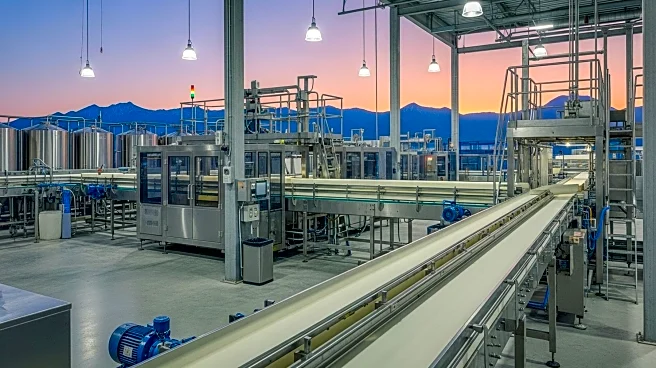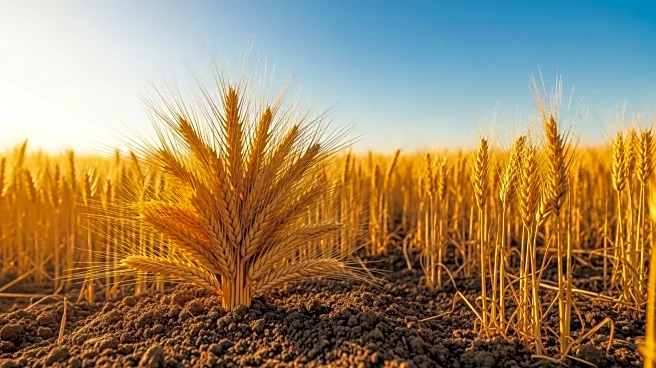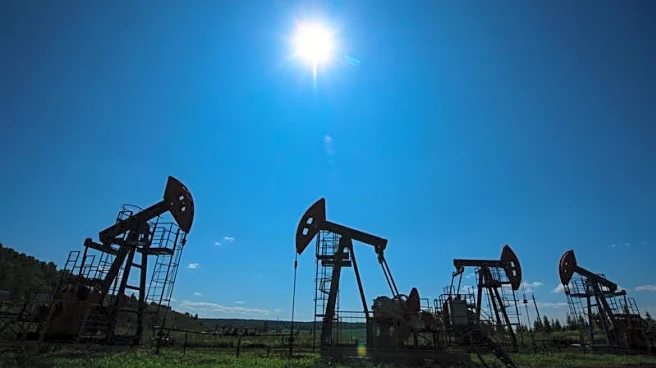What's Happening?
Algeria has entered into an agreement with a German company to construct the world's largest integrated dairy and powdered milk production facility, valued at $3.5 billion. This development aims to address food security challenges in Algeria, a country rich in oil and gas but facing difficulties in producing enough food in dry conditions. The facility is expected to produce significant quantities of powdered milk, which is less popular in the U.S. market today. Norm Dinis of Empire Dairy in Wiggins, Colorado, noted that the western U.S. dairy producers are unlikely to feel the impact of this new facility due to the current market glut of milk powder. The demand for whole milk and protein products in the U.S. remains strong, with consumers preferring dairy creamers and protein-enhanced products over traditional milk powder.
Why It's Important?
The construction of Algeria's dairy facility highlights the global trend of developing countries investing in agriculture to ensure food security. For the U.S. dairy industry, this development poses little threat due to differing market demands and the existing surplus of milk powder. The U.S. dairy market is experiencing a renaissance driven by consumer preferences for protein-rich products, which are increasingly popular. This trend underscores the importance of adapting to consumer demands and maintaining competitive advantages in the global market. The facility's focus on powdered milk, which is less desired in the U.S., suggests that American dairy producers will continue to focus on whole milk and protein products to meet domestic consumer preferences.
What's Next?
As Algeria moves forward with its dairy facility, the U.S. dairy industry will likely continue to focus on innovation and consumer trends, particularly the growing demand for protein-enhanced products. The facility may serve as a model for other developing countries seeking to bolster their food security through agricultural investments. U.S. producers may monitor these developments to identify potential export opportunities or collaborations. Additionally, the ongoing labor shortage in the U.S. agriculture sector may prompt further investments in technology and efficiency to maintain productivity and competitiveness.
Beyond the Headlines
The Algerian dairy facility represents a broader shift towards agricultural self-sufficiency in resource-rich countries. This trend may influence global agricultural policies and trade dynamics, as countries seek to balance resource extraction with food production. The U.S. dairy industry's focus on protein products reflects changing consumer preferences and the influence of social media on dietary trends. As global diets evolve, U.S. producers may need to adapt to new market demands and explore opportunities for international collaboration.











